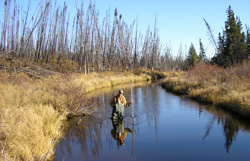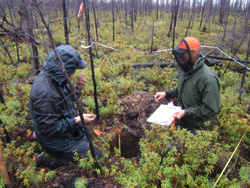Studies of the existing environment, based on technical science, have included:
Aquatic Environment Studies

- Aquatic habitat
- Aquatic plants and invertebrates
- Fish community – populations, spawning, and movements
- Lake sturgeon – species of special interest
- Fish quality – mercury
Physical Environment Studies
- Air quality
- Climate and climate change
- Noise
- Geology and soils
- Water levels and flows
- Ice processes
- Shoreline erosion
- Debris
- Peatland disintegration
- Sedimentation
- Groundwater
- Surface water temperature
- Dissolved oxygen
Terrestrial Environment Studies

- Vegetated habitat classification and mapping
- Rare plants
- Insects
- Amphibians
- Songbirds, raptors and waterfowl
- Small mammals (e.g. voles, rabbits, mice)
- Furbearers (e.g. beaver, muskrat, mink, otter)
- Large mammals (e.g. caribou, moose)
Heritage Resource Studies
- Burial sites
- Heritage resources, such as pottery or bone fragments from pre-contact to the historic period
- Culturally important sites
Socio-Economic Environment and Resource-use Studies
- Land and resource use for traditional, recreational and commercial purposes
- Local and regional economy, including employment and business
- Population, housing, infrastructure and services
- Transportation, navigation safety and access
- Community health
- Culture
- Social well-being and quality of life






